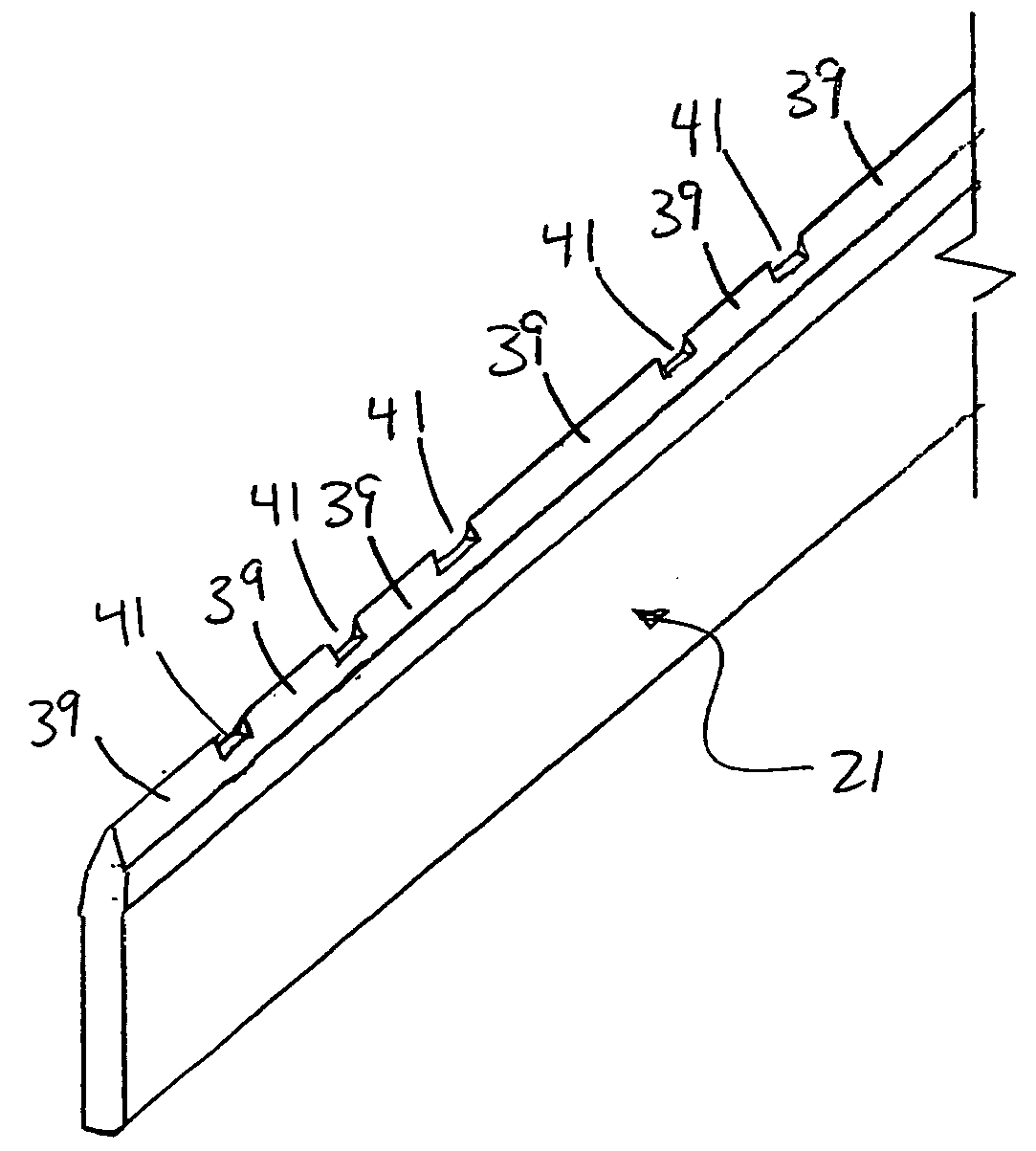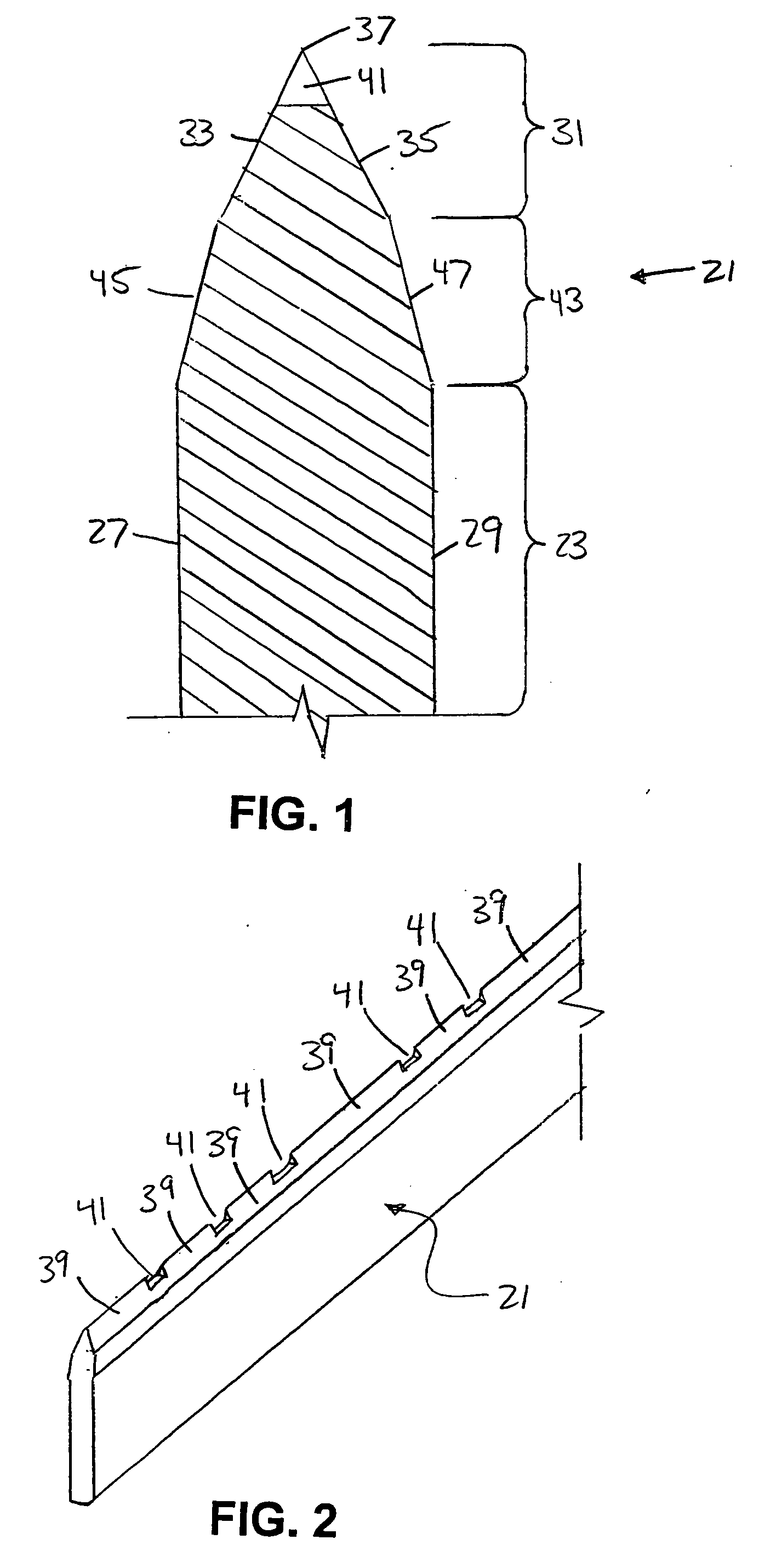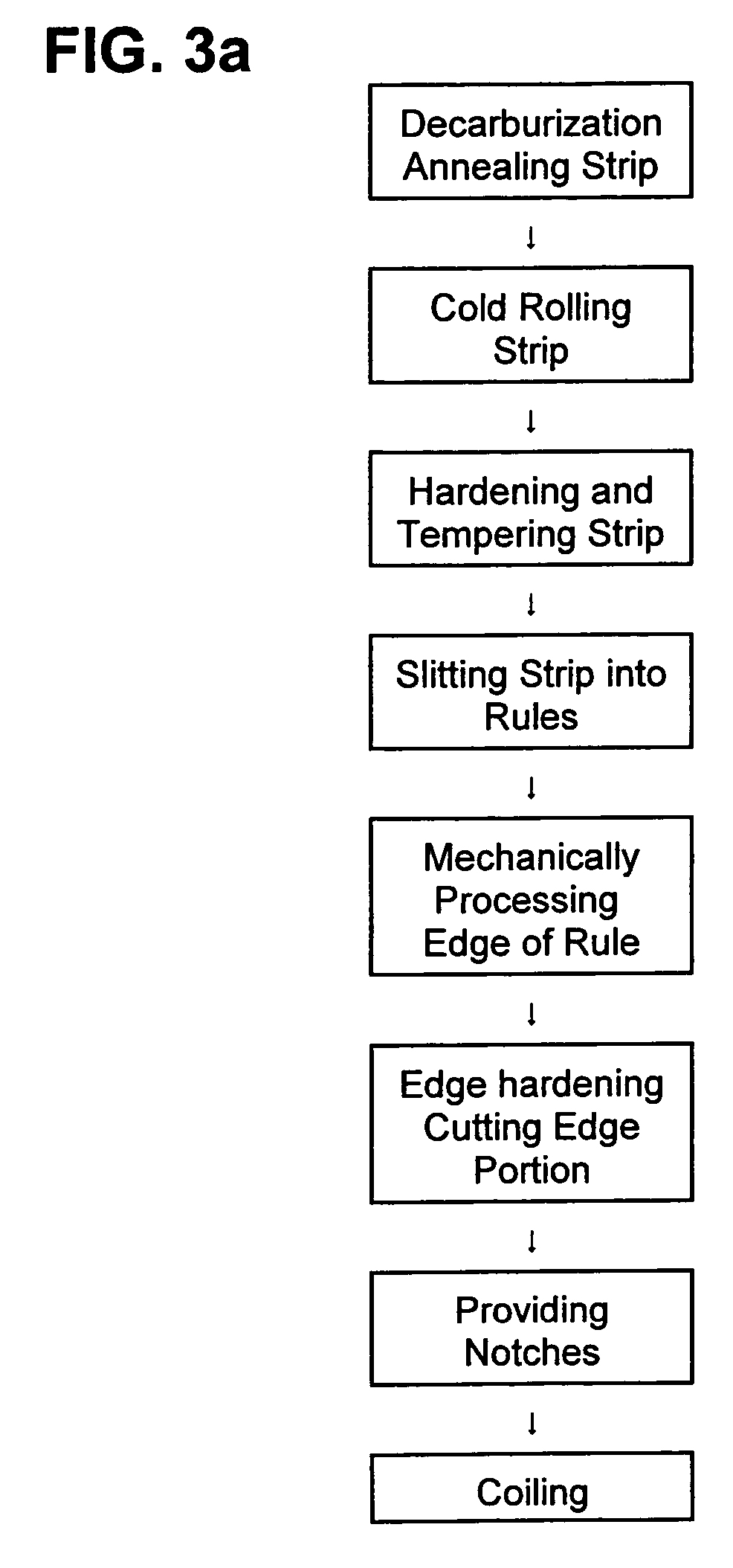Nicked cutting rule
a cutting rule and nicked technology, applied in the field of nicked cutting rules, can solve the problems of difficult to obtain desired bendability characteristics, less bendability of rules without heat treatment, and difficulty in bending, so as to increase the durability of rules, less bendability, and more bendability.
- Summary
- Abstract
- Description
- Claims
- Application Information
AI Technical Summary
Benefits of technology
Problems solved by technology
Method used
Image
Examples
Embodiment Construction
[0014]FIG. 1 shows a nicked cutting rule 21 according to an embodiment of the present invention. The nicked cutting rule 21 includes a shank portion 23 having two substantially parallel shank side surfaces 27 and 29 extending in a direction of length of the rule separated by a thickness of the shank portion. The nicked cutting rule 21 also includes a V-shaped cutting edge portion 31 defined by two cutting edge portion surfaces 33 and 35 that intersect at ends remote from the shank portion 23 to define a cutting edge 37.
[0015] As seen in FIG. 2, the cutting edge portion 31 has portions 39 separated in the direction of length of the rule 21 by a plurality of notches 41 extending inwardly from the cutting edge toward the shank portion. The cutting rule 21 further includes an intermediate portion 43 between and integral with the shank portion 23 and the cutting edge portion 31. The intermediate portion 43 is thinner than the thickness of the shank portion 23 and includes two intermedia...
PUM
| Property | Measurement | Unit |
|---|---|---|
| Length | aaaaa | aaaaa |
| Thickness | aaaaa | aaaaa |
| Thickness | aaaaa | aaaaa |
Abstract
Description
Claims
Application Information
 Login to View More
Login to View More - R&D
- Intellectual Property
- Life Sciences
- Materials
- Tech Scout
- Unparalleled Data Quality
- Higher Quality Content
- 60% Fewer Hallucinations
Browse by: Latest US Patents, China's latest patents, Technical Efficacy Thesaurus, Application Domain, Technology Topic, Popular Technical Reports.
© 2025 PatSnap. All rights reserved.Legal|Privacy policy|Modern Slavery Act Transparency Statement|Sitemap|About US| Contact US: help@patsnap.com



